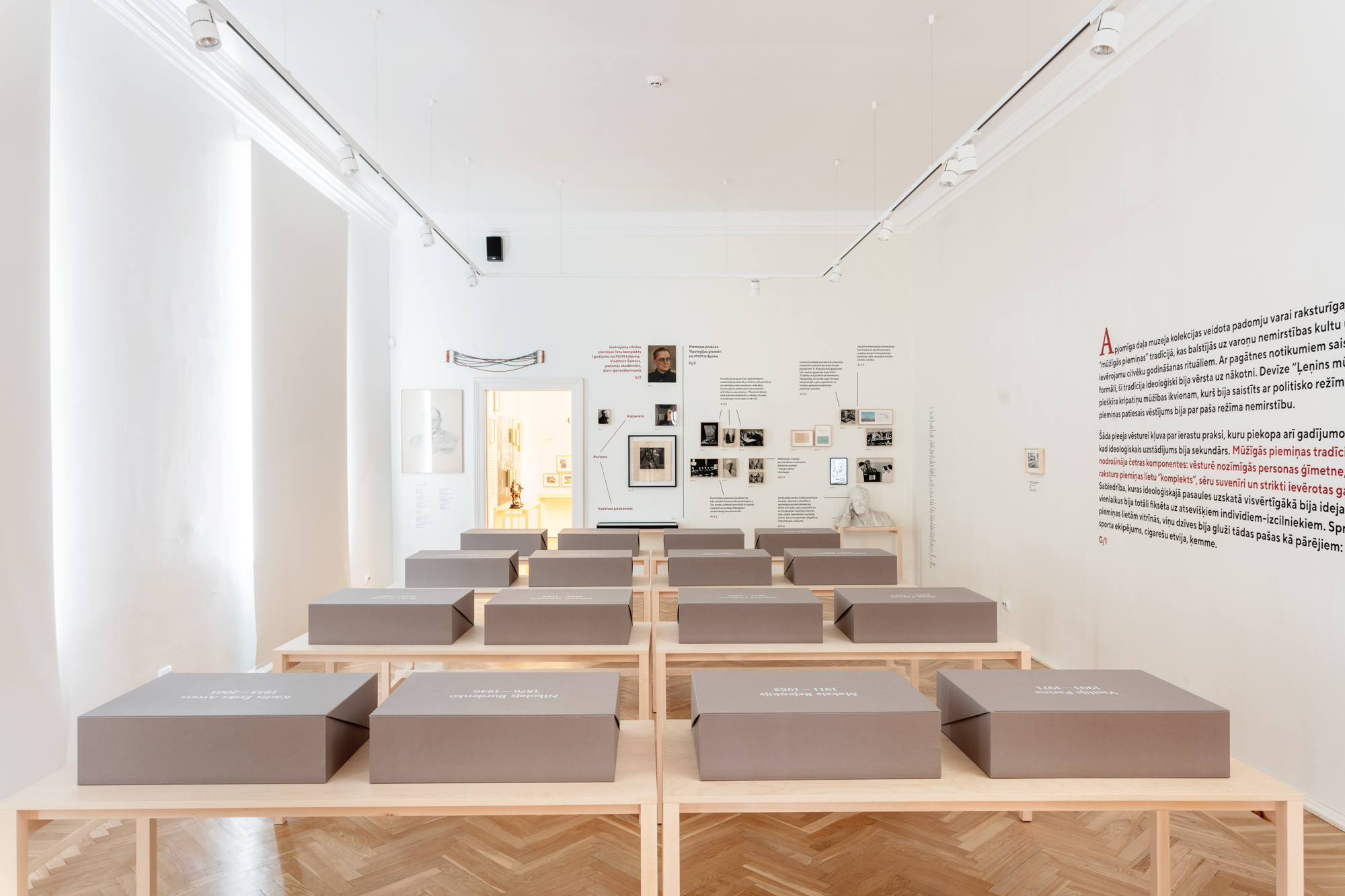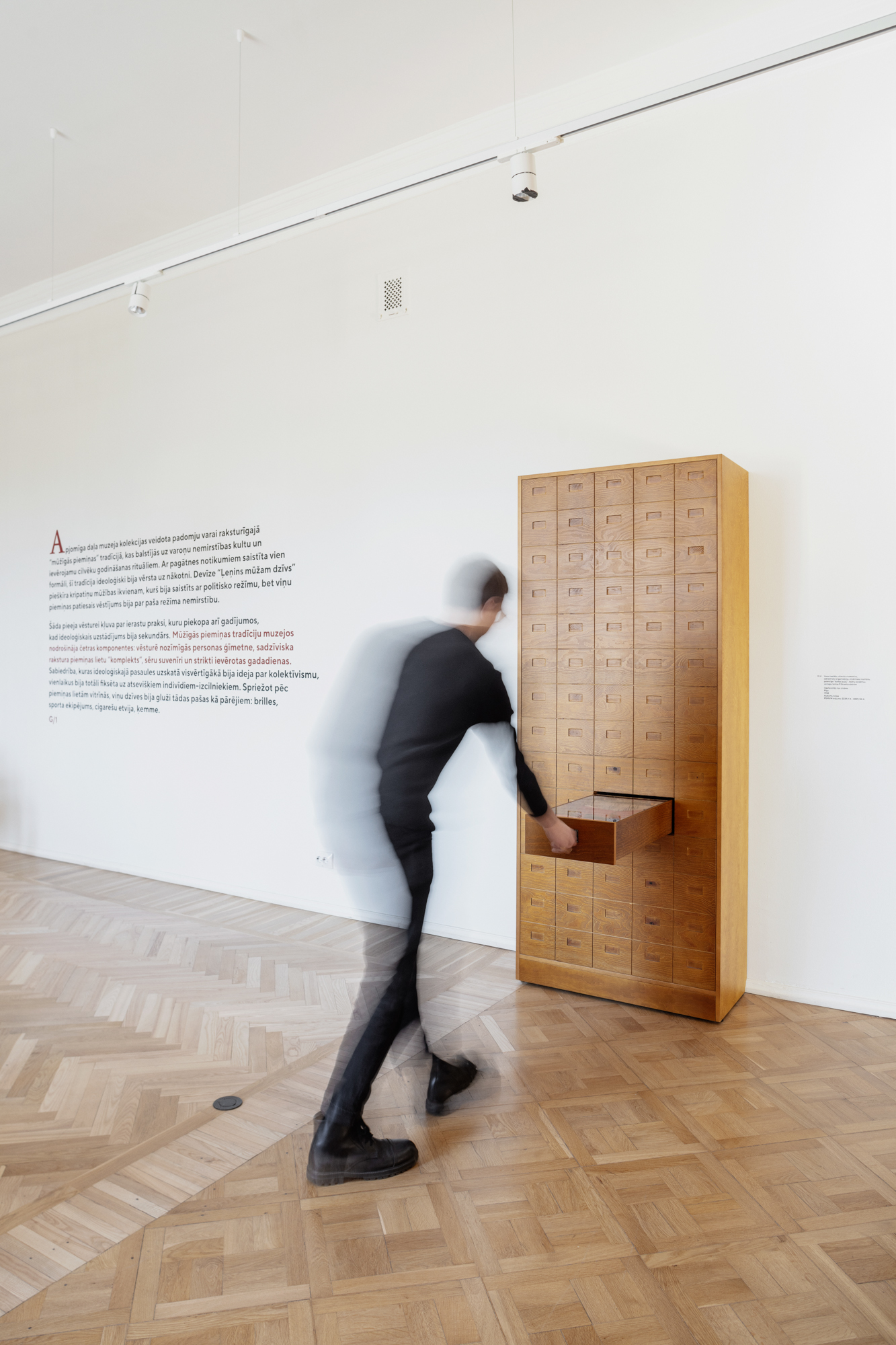Life after Death. Remembrance Practices and the Museum
Life after Death. Remembrance Practices and the Museum

The exhibition is part of a process of self redefining within Pauls Stradiņš Medicine History Museum and highlights its collection and the conditions of its formation as the basic elements of the institution's identity. The museum’s collection is the conceptual starting point not only for the exhibition but also for its design, borrowing the utilitarian simplicity of the depository spaces.
The exhibition is part of a process of self redefining within Pauls Stradiņš Medicine History Museumthe and highlights its collection and the conditions of its formation as the basic elements of the institution's identity. The museum’s collection is the conceptual starting point not only for the exhibition but also for its design, borrowing the utilitarian simplicity of the depository spaces.





The artefacts are displayed similarly to the way they are stored in the museum’s depository, focusing on their physical and material nature rather than their historical or cultural value. In one of the rooms sixteen cardboard boxes, designed to mimic historical archives are arranged in a monumental composition reminiscent of a cemetery. As visitors delve into these boxes, they can experience the researcher's thrill of discovery.
The artefacts are displayed similarly to the way they are stored in the museum’s depository, focusing on their physical and material nature rather than their historical or cultural value. In one of the rooms sixteen cardboard boxes, designed to mimic historical archives are arranged in a monumental composition reminiscent of a cemetery. As visitors delve into these boxes, they can experience the researcher's thrill of discovery.
The artefacts are displayed similarly to the way they are stored in the museum’s depository, focusing on their physical and material nature rather than their historical or cultural value. In one of the rooms sixteen cardboard boxes, designed to mimic historical archives are arranged in a monumental composition reminiscent of a cemetery. As visitors delve into these boxes, they can experience the researcher's thrill of discovery.









The exhibition reaches its culmination through a filing cabinet with a 3-meter-deep drawer. The aim is to allow visitors to physically experience the sometimes surreal quantity of artefacts stored in the museum's depository. The exhibition raises questions about the selection criteria for the preserved items, which in the case of this particular museum have largely been acquired during the Soviet era when collections were often curated with a political agenda.
The exhibition reaches its culmination through a filing cabinet with a 3-meter-deep drawer. The aim is to allow visitors to physically experience the sometimes surreal quantity of artefacts stored in the museum's depository. The exhibition raises questions about the selection criteria for the preserved items, which in the case of this particular museum have largely been acquired during the Soviet era when collections were often curated with a political agenda.
The exhibition reaches its culmination through a filing cabinet with a 3-meter-deep drawer. The aim is to allow visitors to physically experience the sometimes surreal quantity of artefacts stored in the museum's depository. The exhibition raises questions about the selection criteria for the preserved items, which in the case of this particular museum have largely been acquired during the Soviet era when collections were often curated with a political agenda.

Location: Pauls Stradiņš Medicine History Museum
Curators: Kristīne Liniņa, Kaspars Vanags
Exhibition design and architecture: Rihards Funts and GAISS (Arnita un Kārlis Melzobi)
Graphic desgin: Kirils Kirasirovs
Year: 2024
Photography: Reinis Hofmanis
